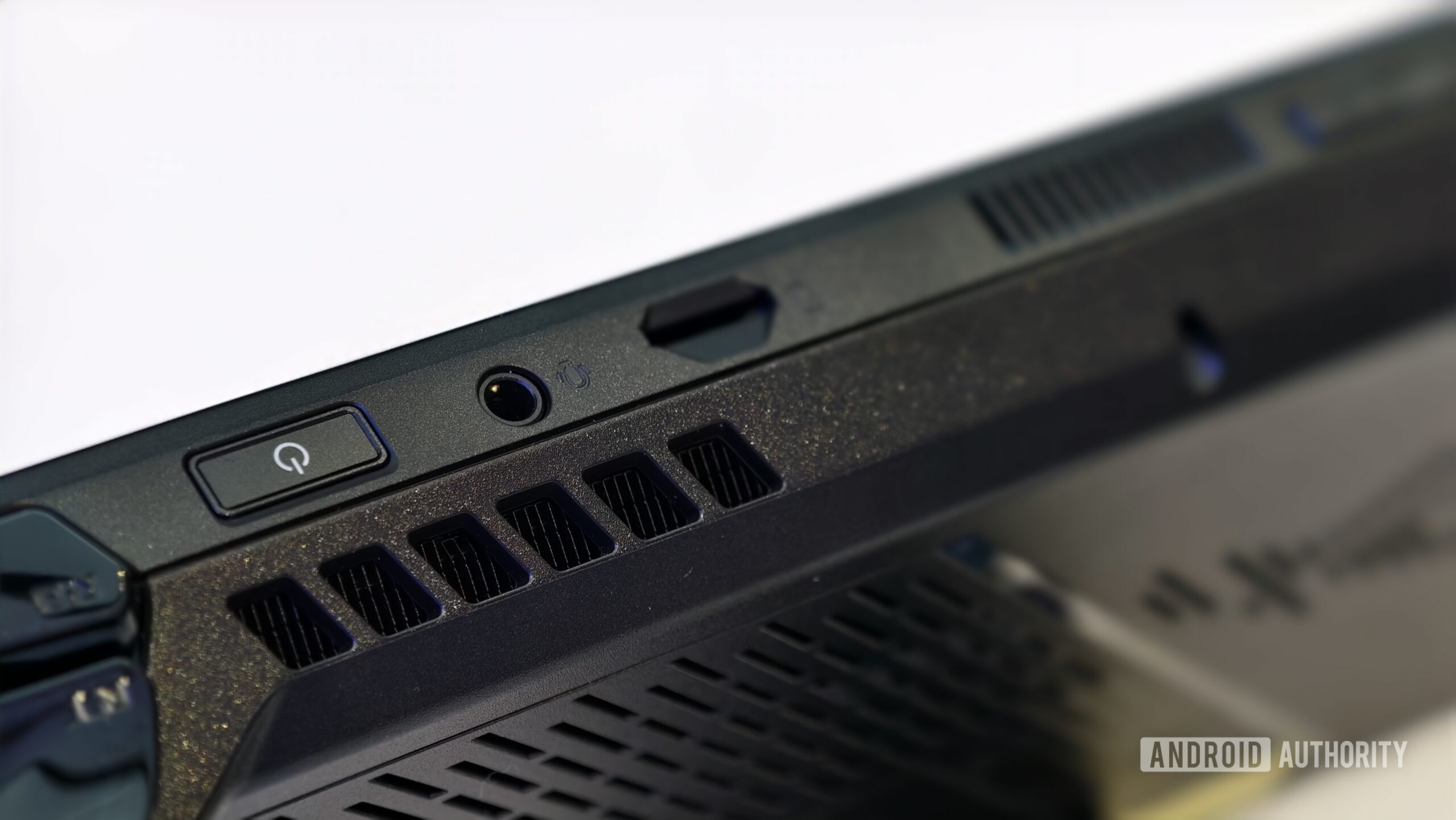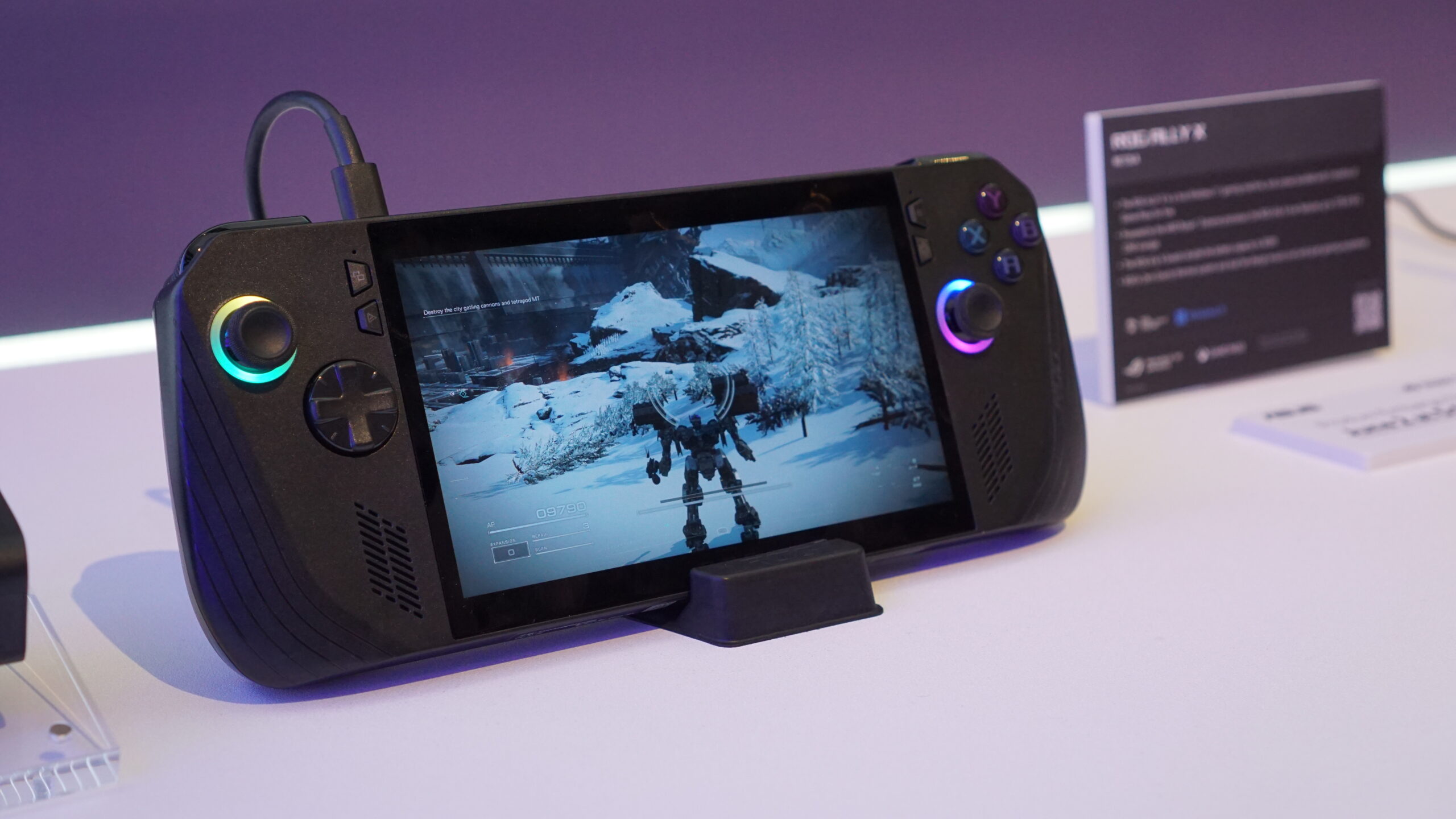I tried the ASUS ROG Ally X and think Steam Deck still has one big advantage
ASUS revealed the ROG Ally X gaming handheld at Computex 2024, coming a few weeks after the firm first teased the device. True to the company’s word, this isn’t a full-fledged successor but more like a ROG Ally 1.5.
I got my hands on ASUS’ latest Windows handheld on the show floor at Computex and brought along my Steam Deck to compare the two. Here are my first impressions of the ROG Ally X and where I think it improves on the Ally formula, but also where I think Valve’s machine still has a clear advantage.
What’s new with the ROG Ally X?
Paul Jones / Android Authority
The Ally X seems like the same device as the regular Ally in many ways. The basic design is largely identical at first glance, you’ve still got that relatively powerful AMD Z1 Extreme processor, and there’s still a seven-inch FHD+ 120Hz screen (500 nits) with a variable refresh rate.
Take a closer look, however, and you’ll start to see some substantial changes. One of the biggest complaints about the original Ally was the woeful battery life. Fortunately, the company has doubled battery capacity with the Ally X, going from a 40Wh battery to an 80Wh cell. We didn’t get a chance to obviously put this battery life to the test owing to our limited hands-on time, but this bodes well for people who were put off by the original model’s endurance.
You’d expect a weight increase with double the battery capacity, but ASUS claims that the weight has only increased by 0.15 pounds to 1.49 pounds. When comparing it with my Steam Deck, I did notice the ROG device was slightly heavier. However, this weight disparity didn’t seem to be an issue in my short time playing on the device.
A huge battery, more RAM, and 1TB of storage are arguably the three biggest ROG Ally X changes
There are several other notable changes, including a slightly rounder shape, improved handles for a better grip, smaller rear keys to avoid accidental presses, slightly tweaked button/stick layouts, and an eight-way D-pad instead of the standard four-way option. The latter change, in particular, should be ideal for fighting games. I felt like it was a largely seamless switch to play the Steam Deck and then the Ally X from a hardware perspective, despite the differing joystick layouts and the trackpads on the Valve device.
We’ve covered loads more changes in our ROG Ally X announcement article, including a USB 4.0 port in lieu of the XG Mobile port, rejigged internals, and better cooling. But we were particularly keen to find out whether the original model’s defective microSD card reader, which fried memory cards, was fixed.
“So basically, we had to redesign the entire motherboard for the Ally X. So a bunch of things have changed on that, one of which is the SD card reader. The power delivery has changed a little bit on that,” Whitson Gordon, ASUS senior manager of content marketing, told Android Authority.

Hadlee Simons / Android Authority
Gordon added that the SD card reader location was also moved, although he was quick to point out that this was due to the motherboard’s redesign. The representative also said that the company has “some really good QA processes in place now” to catch issues like this.
This all makes for some notably improved hardware, but what about the software experience? This is my first experience with the ASUS Armory Crate UI and Windows 11, and it’s definitely a significant step down from the intuitive Steam OS experience on Valve’s Deck. This was an admittedly short period of time to try out the device, but I noticed some jankiness while using the device (e.g. jumping in and out of games) and a generally awkward UI layout. Now, if only Microsoft bothered to bring its own handheld-focused UI to Windows 11.
In our short time with the device, we were able to play a couple of games, namely PalWorld and Armored Core 6. Both games were smooth for the most part while plugged in, although you do notice a lot of judder in the former title for a spell after unplugging the Ally X.
Is the ASUS ROG Ally X worth a look?

Hadlee Simons / Android Authority
The ROG Ally X’s $799 price tag is still somewhat steep compared to the 1TB Steam Deck OLED ($649), which is admittedly subsidized by the Valve storefront. What’s even more concerning is that the software still isn’t where it needs to be, and that’s an issue ASUS can’t fully solve without Microsoft’s help.
Nevertheless, the rejigged Ally model is almost what the original Ally should’ve been. Between the 1TB storage and that gigantic battery, there’s a lot to like here, while numerous small tweaks elsewhere certainly don’t hurt, either. So if you can get past the awkward, somewhat unpolished software and high price tag, this is certainly worth a second look.
Source link
